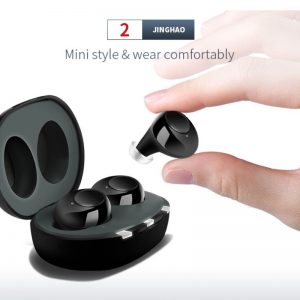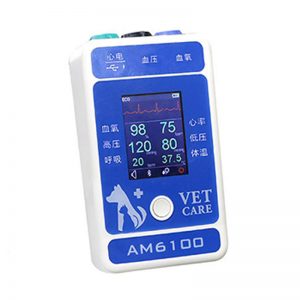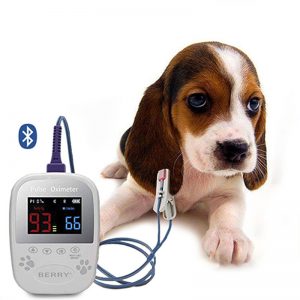
In the field of personal medical machinery and equipment, developed countries such as Europe, America, and Japan, smart oximeters have become a necessary medical monitoring device for many families. With the improvement of domestic living conditions and health awareness, smart oximeters have gradually entered the family. Ten thousand households, middle-aged and elderly people, people who need oxygen therapy, sports enthusiasts, and plateau travel enthusiasts all need an intelligent oximeter to let you see health.
The smart oximeter developed by ITSOUG is a small and convenient finger clip type smart oximeter solution, equipped with advanced Bluetooth 4.0 technology, which helps users to conduct quick self-health detection and output blood oxygen and pulse information. The blood oxygen saturation measurement range is 35% ~ 100%, and the pulse rate measurement range is 30 ~ 250BPM. This device is not only aimed at users with vascular diseases, but also for high-intensity working people, pregnant women, and elderly people. In addition, by being equipped with a mobile APP and a cloud data platform, the smart oximeter can record each measurement data of the user, and these data will also be stored in the cloud, and the user’s physical health evaluation will be given through the smart cloud’s unique professional health algorithm And recommendations. Users can request these data from the server through the mobile phone APP when needed.
Introduction of Intelligent Oximeter
The smart oximeter refers to the instrument for measuring blood oxygen. Hypoxic patients should use the smart oximeter for a long time to detect the blood oxygen content, which can effectively prevent the occurrence of danger. If there is a hypoxic condition, oxygen supplement is the first time, greatly reducing the disease Chance to attack.
Intelligent oximeter monitors the ratio of hemoglobin carrying oxygen to hemoglobin not carrying oxygen in arteries. A typical oximeter has two light-emitting diodes. These two light-emitting diodes face the patient’s test site-usually the fingertips or earlobe. One diode emits a light beam with a wavelength of 660 nanometers, and the other emits 905, 910, or 940 nanometers. The absorption rate of oxygenated hemoglobin for these two wavelengths is very different from that of oxygen-free. Using this property, the ratio of two hemoglobins can be calculated. The test process usually does not require blood from the patient. The usual smart oximeter can also display the patient’s pulse.
The advantages of intelligent oximeter
The smart oximeter uses the second-generation LEC PLUS optical frequency digital conversion technology, which can effectively improve the measurement accuracy under sports and weak perfusion. The design of waterproof splash, anti-drop, anti-motion is very convenient and practical, shading design, shielding The interference of ambient light to the measurement.
One machine can detect blood oxygen value and heart rate index synchronously, using high-performance acceleration sensor, the result can be output in 8 seconds, two-color OLED display, you can switch the screen direction with one key Energy consumption, display is fine and intuitive.
Before using the smart oximeter, clean the fingertips, and then clamp the pulse smart oximeter to the fingertips, wait for about 6-8 seconds to measure the pulse and blood oxygen data. At a glance, it is clear and easy to understand, the small body is active and easy to carry, and can be detected anytime and anywhere.
The smart oximeter illuminates the finger with red light and infrared light, and converts the light frequency into digital, which can effectively improve the measurement accuracy of blood oxygen. The stepped pulse histogram shows high and low changes with the pulse beat, which can reflect the detection time. One-touch operation of pulse beat strength is easy to understand.
Introduction to the function of intelligent oximeter
Intelligent oximeter can detect human’s blood oxygen saturation and pulse by finger, can upload to cloud data system to form a database, record each blood oxygen parameter value, can provide users with analysis, evaluation, warning and feedback functions. The smart oximeter is mainly used to measure pulse rate, blood oxygen saturation, and perfusion index (PI).
1. Pulse rate: the number of pulses per minute. Normally, the pulse rate and the heart rate are the same, and the pulse rate is less than the heart rate when atrial fibrillation or contraction before the frequent period
2. Blood oxygen saturation: one of the important basic data in clinical medicine, which refers to the percentage of the combined O2 capacity in the total blood volume that can be combined with the total O2 capacity that can be combined. It is an important indicator reflecting the oxygen status in the body.
3. Perfusion index (PI): refers to the blood perfusion index. The PI value can reflect the pulsating blood flow, that is, the ability of blood perfusion. The greater the pulsating blood flow, the more the pulsating component and the greater the PI value.
The characteristics of intelligent oximeter
Intelligent oximeters are generally used in oxygen bars, or in hospitals, or for people with lung diseases to use devices that measure oxygen content in the body. Blood oxygen saturation (SpO2) is one of the important basic data in clinical medicine and an important parameter for monitoring sleep apnea. It can be used to measure the oxygen content in the body.
- 1. The product is small, no cable, easy to carry
- 2. Convenient and fast to use: No need to go to the hospital for blood collection, no need to suffer from skin and flesh, as long as you gently pinch your finger, you can accurately see your physical health in 3 seconds.
- 3. Easy to operate: only one step is needed-finger inserted into the machine, intelligent automatic start-up monitoring, finger removed from the machine, automatic shutdown and power saving.
- 4. Rich monitoring functions: blood oxygen saturation, pulse rate, blood perfusion index (reflecting the blood perfusion at the measurement site, the greater the pulsating blood flow, the more pulsating components, the greater the PI value, measuring the blood oxygen The higher the saturation accuracy).
- 5. Bluetooth data transmission: Through Bluetooth transmission, realize the synchronous display and mass storage of data on the mobile phone.
- 6. Shading design: The shading design effectively shields the interference of ambient light to the measurement.
- 7. Energy saving and environmental protection: with power management function, automatic shutdown without signal in 8 seconds, and battery power management.
- 8. Safe and trouble-free: There is no possibility of cross-infection, because there is no need for bleeding; it avoids the tediousness of waiting in line to check and check your physical condition anytime, anywhere
The structure of intelligent oximeter
A microprocessor, memory (EPROM and RAM), two digital-to-analog converters that control the LED, a device that filters and amplifies the signal received by the photodiode, and an analog-to-digital converter that digitizes the received signal to provide to the microprocessor . The LED and photodiode are placed in a small probe that comes into contact with the patient’s fingertip or earlobe. The pulse oximeter also generally includes a small liquid crystal display. The smart oximeter is a device that uses spectrophotometry to non-invasively obtain blood oxygen saturation by detecting the absorption of light by blood. Finger clip blood oxygen is generally divided into two upper and lower shells. During measurement, the finger clip blood oxygen is clamped on the finger and other parts with sufficient blood circulation to measure. Its measurement has no warehouse, fast response, safe, continuous and reliable detection indicators. Be recognized.
The working principle of intelligent oximeter
The principle and structure of the smart oximeter are driven by sequentially driving a red LED (660nm) and an infrared LED (910nm). The blue line indicates the induction curve of the receiving tube to reduced hemoglobin when the hemoglobin does not carry oxygen molecules. From the graph It can be seen that the reduced hemoglobin absorbs 660nm red light more strongly, while the 910nm infrared light absorbs less. The red line represents the hemoglobin and red blood cells with oxygen molecules. The receiver tube’s induction curve for oxyhemoglobin. It can be seen from the figure that the absorption of 660nm red light is relatively weak, and the absorption of 910nm infrared light is relatively strong. In blood oxygen measurement, reducing hemoglobin and aerobic hemoglobin, by detecting the difference between the two types of light absorption at different wavelengths, the measured data difference is the most basic data for measuring blood oxygen saturation. In the blood oxygen test, the two most common wavelengths of 660nm and 910nm actually have to achieve higher accuracy. In addition to the two wavelengths, they have to be increased, and even up to 8 wavelengths. The main reason is that human hemoglobin has reduced hemoglobin. In addition to oxyhemoglobin, there are other hemoglobins, we often see carbon oxyhemoglobin, more wavelengths are conducive to better accuracy.
Technical parameters of intelligent oximeter
Intelligent oximeter is based on the absorption spectrum characteristics of reduced hemoglobin and oxyhemoglobin in the red and infrared regions, using Lambert-Beer law to establish a data processing experience formula to obtain measurement results through photoelectric conversion.
- Display format: LED display;
- Blood oxygen saturation display: 35-99%, 2-digit seven-segment digital display;
- Pulse rate display: 30-250bpm, 3-digit seven-segment digital display;
- Pulse wave display: 6-segment bar graph display;
- Low battery voltage indication: LED symbol;
- Power requirements: 2 AAA 1.5V alkaline batteries, voltage adaptation range: 2.6-3.6 volts;
- Power consumption: less than 40 mA;
- Resolution: blood oxygen saturation ± 1%, pulse rate ± 1bpm;
- Measurement accuracy: the blood oxygen saturation is ± 2% in the 70% -99% segment, less than 70% is undefined, and the pulse rate is ± 2bpm;
- Measurement performance under weak perfusion: when the pulse filling degree is 0.5%, the blood oxygen and pulse rate values can be displayed correctly;
- Anti-interference ability of ambient light: the deviation between the measured value of blood oxygen under indoor natural light and existing lighting sources is less than ± 1% compared with the measured value under darkroom conditions;
Intelligent oximeter measurement index
The main measurement indexes of the oximeter are pulse rate, blood oxygen saturation, and perfusion index (PI). From a medical analysis, the oxygen content in the blood is greater than or equal to 95, which is a normal index; the pulse between 60-100 times per minute is a normal index.
- 1. Blood oxygen saturation: normal human arterial blood has a blood oxygen saturation of 98% and venous blood of 75%. It is an important indicator that reflects the oxygen status in the body. It is generally believed that the normal value of blood oxygen saturation should not be less than 94%, and less than 94% is regarded as insufficient oxygen supply.
- 2. Pulse rate: Pulse refers to the pulsation of superficial arteries. The pulse and heartbeat of a normal person are the same. Heart rate is the frequency of heart beat. The average person is between 60-120 times per minute. However, people may experience rapid heartbeat in situations such as exercise and stress. Pulse rate is the number of pulses per minute. Normally, the pulse rate and heart rate are the same. The pulse rate is less than the heart rate when contracting before atrial fibrillation or frequent episodes.
- 3. Perfusion index (PI): The PI value reflects the pulsating blood flow, that is, the blood perfusion ability. The greater the pulsating blood flow, the more the pulsating component and the greater the PI value. Therefore, the measurement site (skin, nails, bones, etc.) and the patient’s own blood perfusion (arterial blood flow) will affect the PI value. Since the sympathetic nerve affects heart rate and arterial blood pressure (affects pulse arterial blood flow), the human nervous system or mental state also indirectly affects the PI value. Therefore, the PI value will be different under different anesthesia conditions.
- 4. Evaluation of test results: From medical analysis, the oxygen content in the blood is greater than or equal to 95, which is a normal index; the pulse between 60-100 times per minute is a normal index. If the values you detect do not meet the above two major indicators, please test 2-3 times at different time points to maintain continuous testing for 2-3 days. If the values still do not meet the standards, we suggest you go to the hospital for detailed consultation.
Smart Oximeter Use Skills
Intelligent oximeter lightly grips fingertips for a few seconds, you can measure the body’s oxygen content (judging the body’s hypoxia) and heart rate anytime, anywhere. The usage of the smart oximeter is as follows:
- 1. Install two AAA batteries according to the correct marking in the battery compartment and close the battery cover;
- 2. Clip your finger into the rubber hole (finger should be fully extended) and then release the clip;
- 3. The switch button on the front panel of the stand-alone machine is sufficient;
- 4. Read the relevant data directly from the display, the blood oxygen saturation, pulse frequency and pulse amplitude can be displayed on the display;
- 5. Each time you press the key during the measurement, you can switch the display direction once, a total of 4 directions can be switched or the built-in gravity sensor, the automatic one can switch the 4 display directions.
Development prospect of intelligent oximeter
It can be seen that with the escalation of national health awareness, the public’s health has not kept pace. However, thanks to the introduction of various favorable measures and policies of the country, the rapid development of China’s overall medical and health product market, and the emergence of increasingly rich categories and rapid iteration of family medical and health products, the public is able to “unlock” more Refined basic family treatment and daily health care scenes, while eliminating the tediousness of running hospitals or community visits at designated times. With the rapid development of modern society, people’s living standards are improving day by day, and people are paying more and more attention to healthy development. Whether it is a young person working 12 hours, an elderly person over 60 years old, a patient suffering from respiratory disease or vascular disease, smart oximeter It is conducive to maintaining and supervising their health, so such a health supervision instrument for young and old, his market share is huge.







